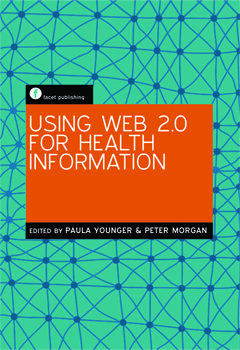
Primary tabs
You don't need to be an ALA Member to purchase from the ALA Store, but you'll be asked to create an online account/profile during checkout to proceed. This Web Account is for both Members and non-Members. Note that your ALA Member discount will be applied at the final step of the checkout process.
If you are Tax-Exempt, please verify that your account is currently set up as exempt before placing your order, as our new fulfillment center will need current documentation. Learn how to verify here.
- Description
- Table of Contents
- About the authors
- Reviews
In the area of health information, the potential for using the Internet for professional collaboration is immense. Web 2.0 has affected every library and information sector and has tremendous potential to transform health information delivery still further.
By drawing together international case studies and reflections on using Web 2.0, this new book blends practical insights, theory, and reflective approaches to offer a cohesive overview of how Web 2.0 is already changing health and medical information work.
Key topics include:
• Enhancing medical, nursing, and health education
• Information literacy in a health information environment
• Supporting research
• Supporting clinical care
• Developing a service presence using Web 2.0
• Using social networking to develop an outreach service.
This book will be relevant and useful both to those new to Web 2.0 and to those with more experience wishing to gain further insight into its application.
PART 1: THE BASICS 1. Health information: an overview - Peter Morgan and Paula Younger2. Web 2.0 in healthcare information: an overview - Paula Younger PART 2: WEB 2.0 AND THE IMPLICATIONS FOR HEALTH INFORMATION 3. Emerging technologies in health, medical and nursing education - Patricia Anderson4. Supporting learners via Web 2.0 - Laura Cobus-Kuo5. Supporting research - Chris Mavergames6. Crowdsourcing: the identification of content suitable for the developing world - Jon Brassey7. Supporting patient needs: an overview of the potential role of Web 2.0 in patient and consumer information - Paula Younger8. Some ethical and legal considerations in the use of Web 2.0 - Peter Morgan PART 3: WEB APPLICATIONS IN HEALTH INFORMATION PROVISION: SOME PRACTICAL EXAMPLES 9. Web 2.0 in health libraries - Pip Divall10. RSS (Really Simple Syndication): helping faculty and residents stay up to date - Thane Chambers, Dale Storie and Sandy Campbell11. Using mashups in health information provision - Jukka Englund12. Twitter in a hospital library - Hannah Prince13. Using Web 2.0 to facilitate staff development - Andrew Booth, Anthea Sutton and Andy Tattersall PART 4: THE FUTURE 14. Web 3.0 and health librarians: what does the future hold? - Allan Cho and Dean Giustini15. Conclusion - Paula Younger
Paula Younger
Paula Younger is a UK Chartered Librarian with several years of experience in NHS, academic, and government libraries and information services. Her interests include the use of technology, health literacy, and healthcare information in languages other than English. Since the 1990s, she has published several articles, which have appeared in several professional LIS and nursing journals as well as on international websites. In 2010, she co-edited Using Web 2.0 for Health Information with Peter Morgan of Cambridge University.
Peter Morgan
Peter Morgan is Head of Medical and Science Libraries, Medical Library, Cambridge University.
"The collaborative potential of innovations such as blogs, wikis and RSS feeds could revolutionize health information. Looking at what has been achieved so far allows us to think about what we can do in the future. This is valuable reading for those who are wondering where thier place is in the brave new world of Web 2.0."
--Information World Review "Using Web 2.0 for Health Information does provide quite a good overview of the applications available as well as practical examples of how they may be utilized in a health library environment." --HLA News


